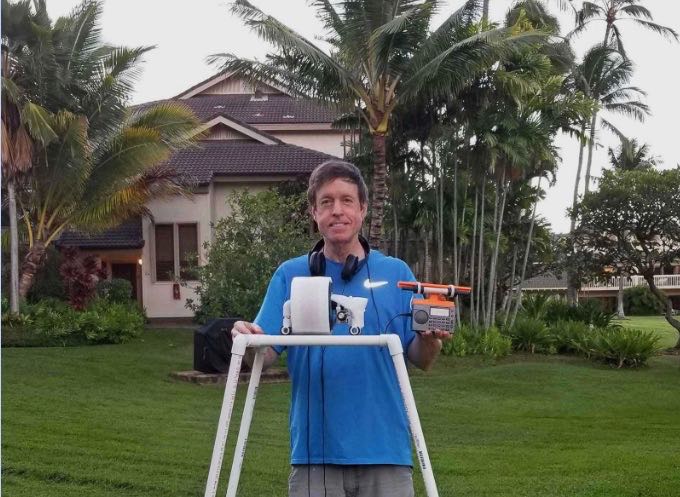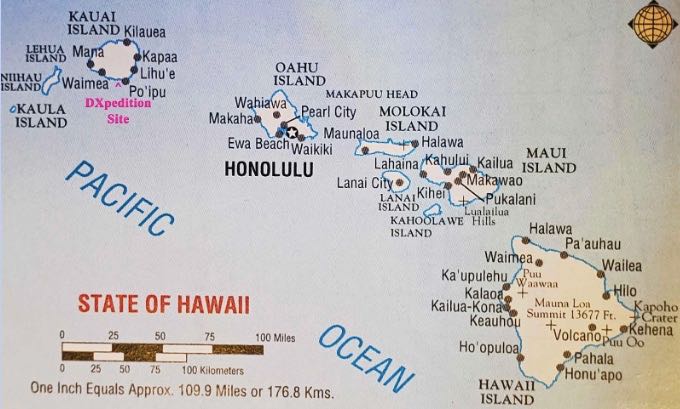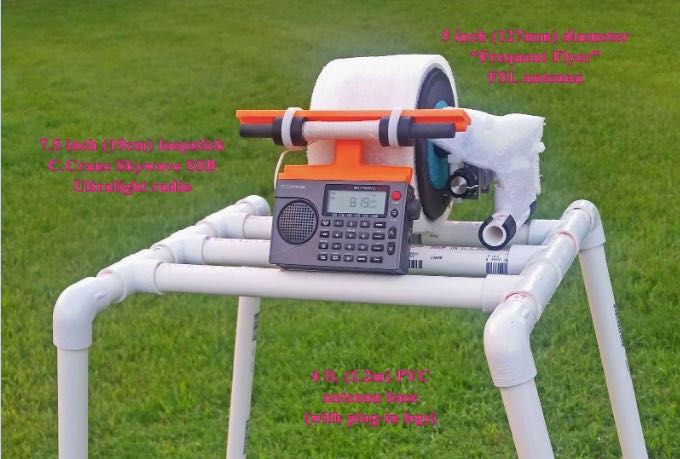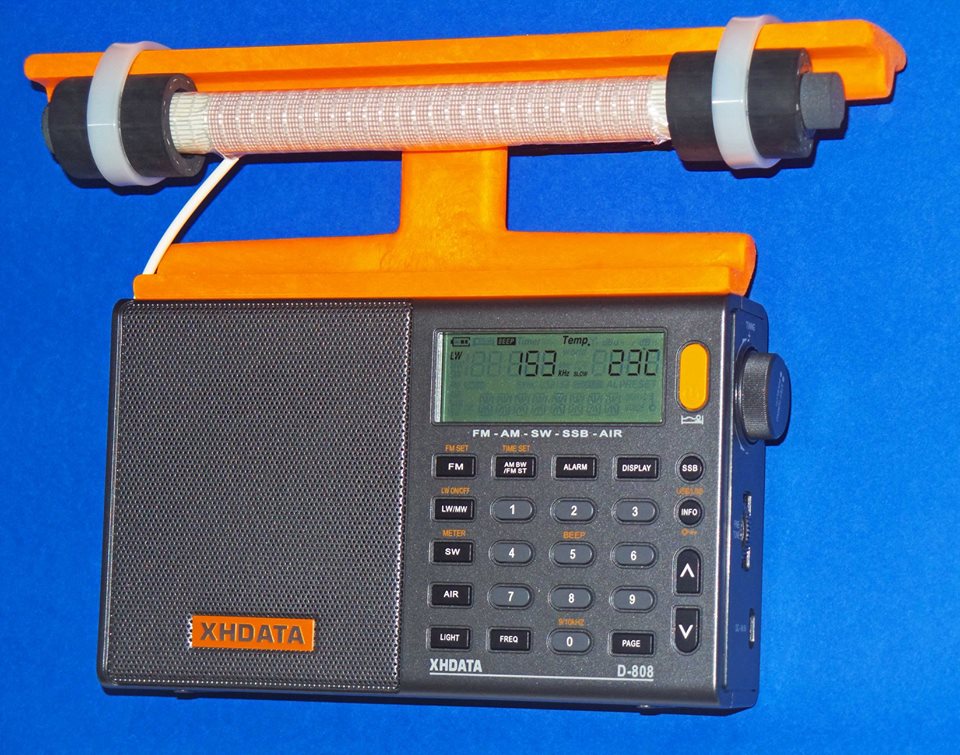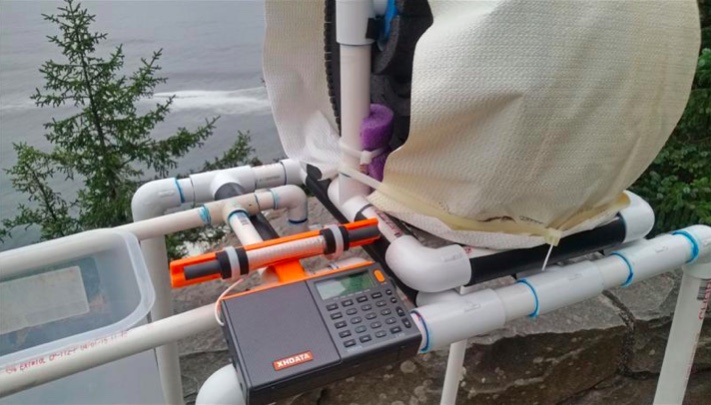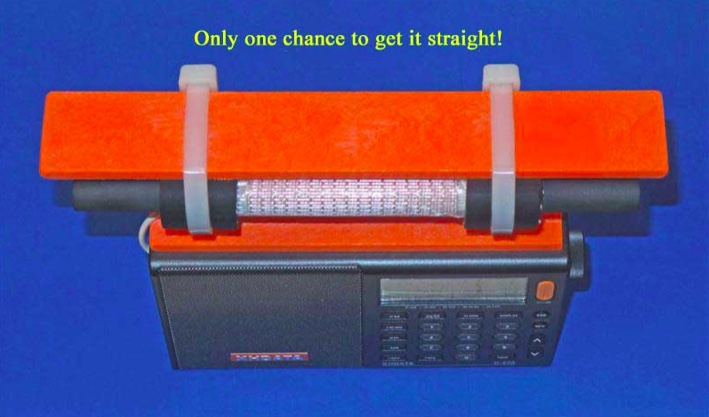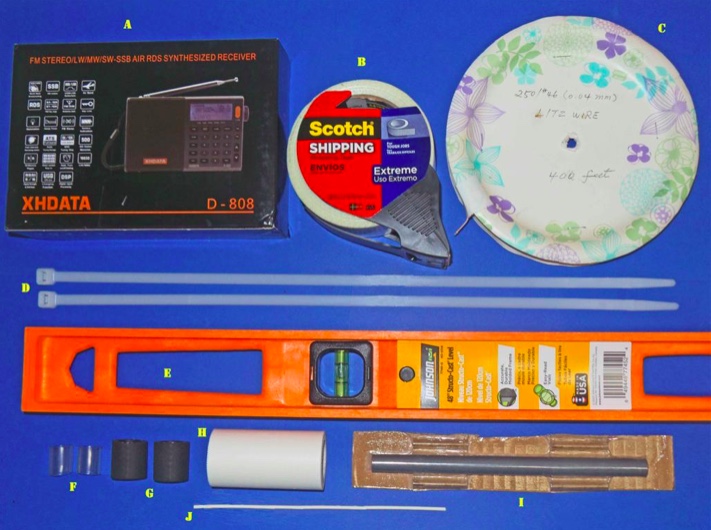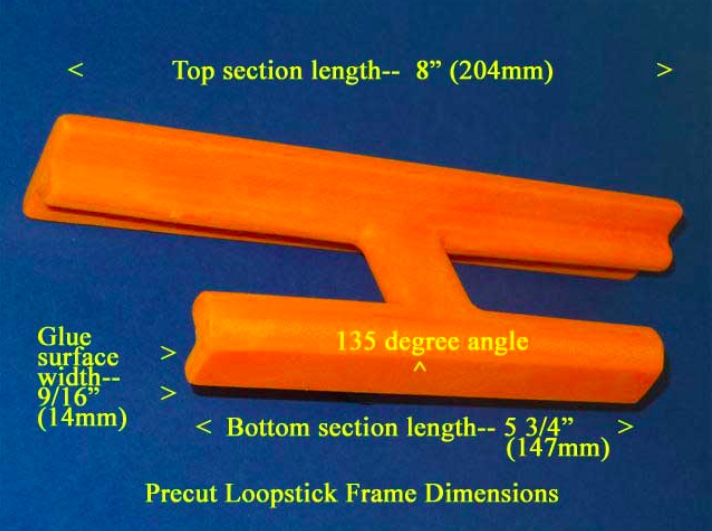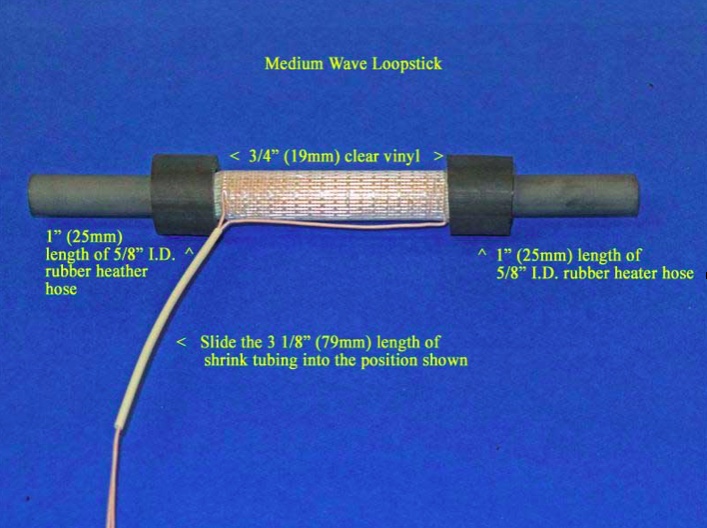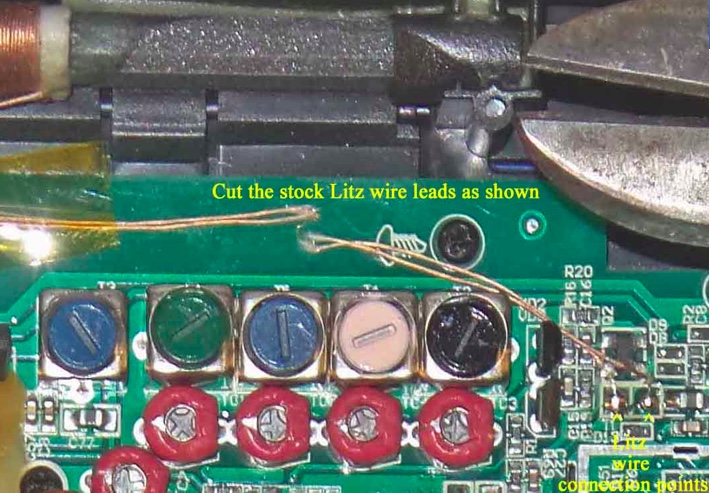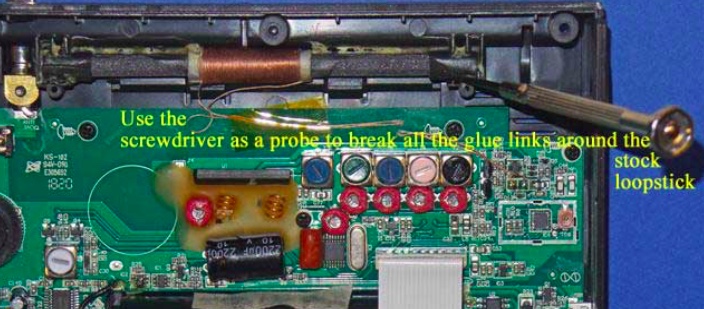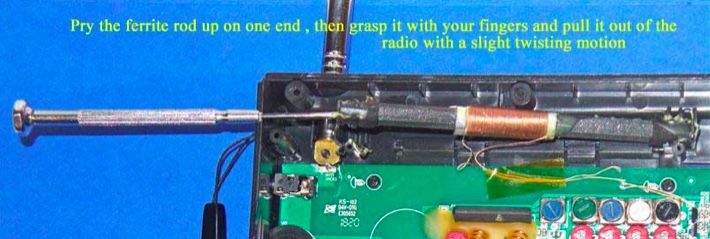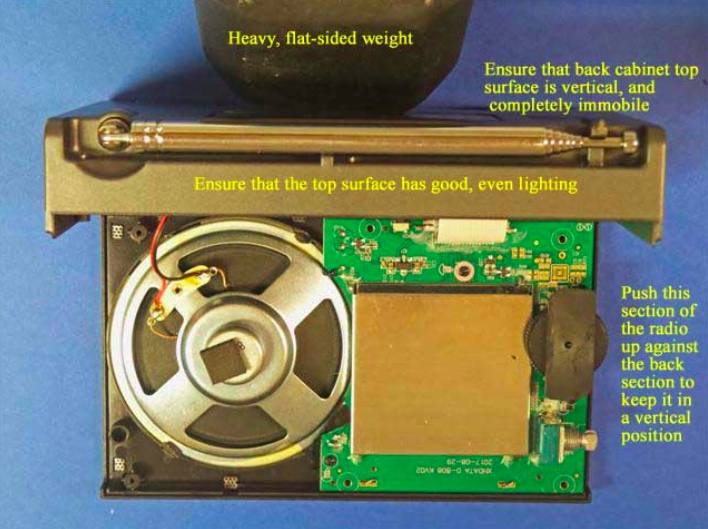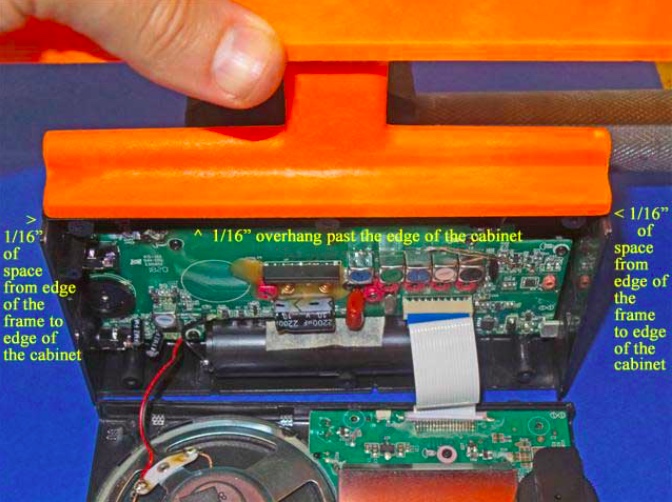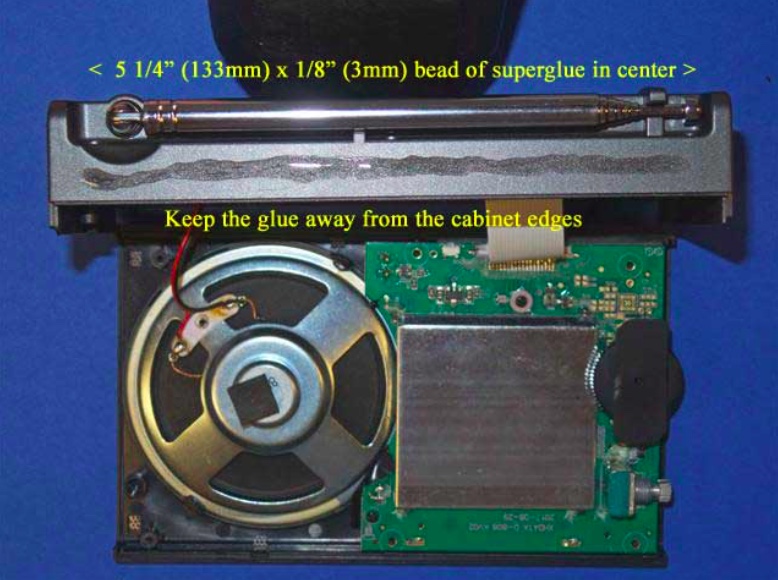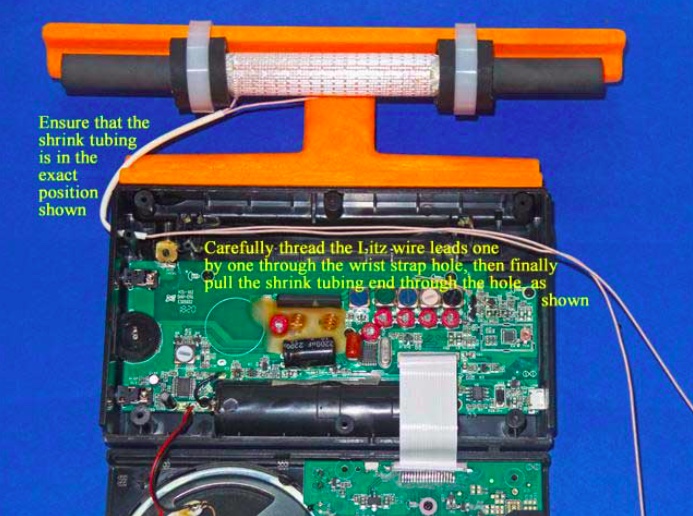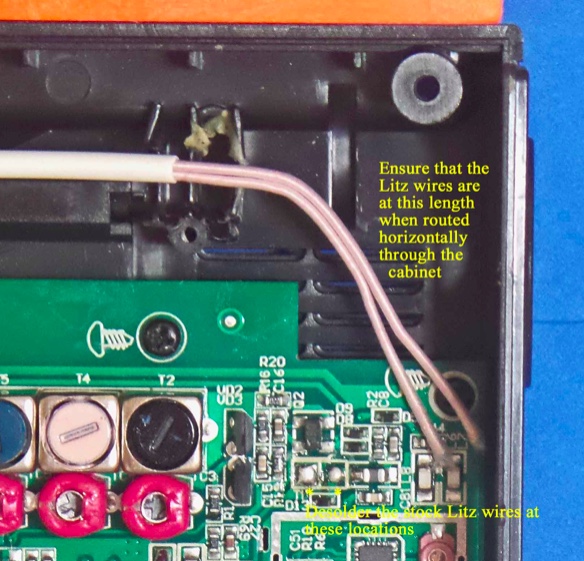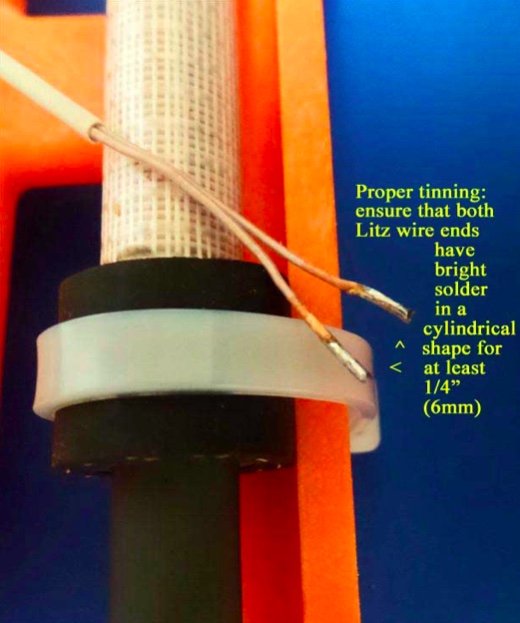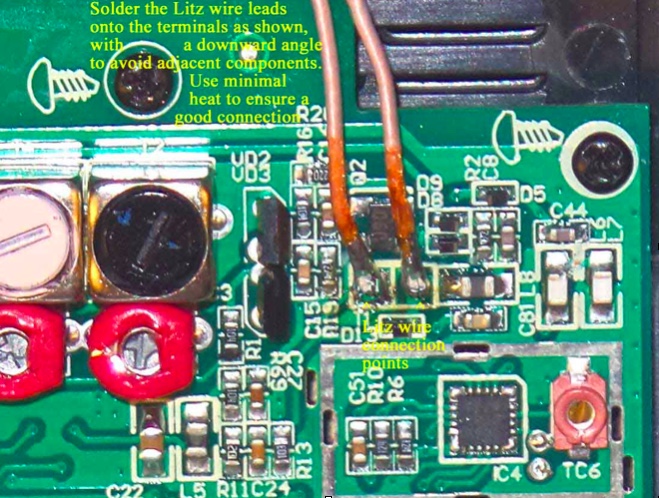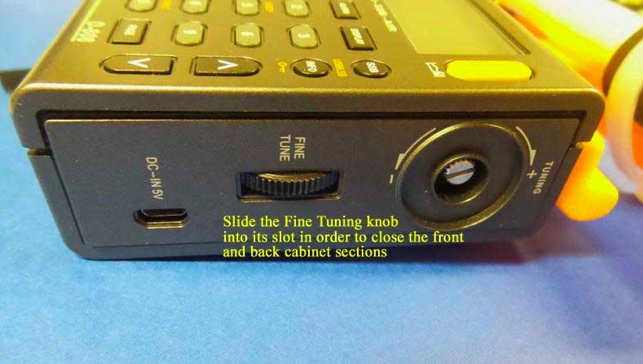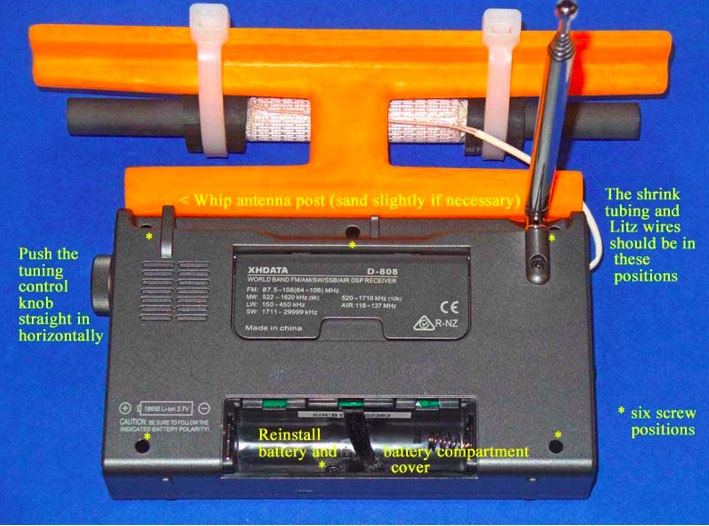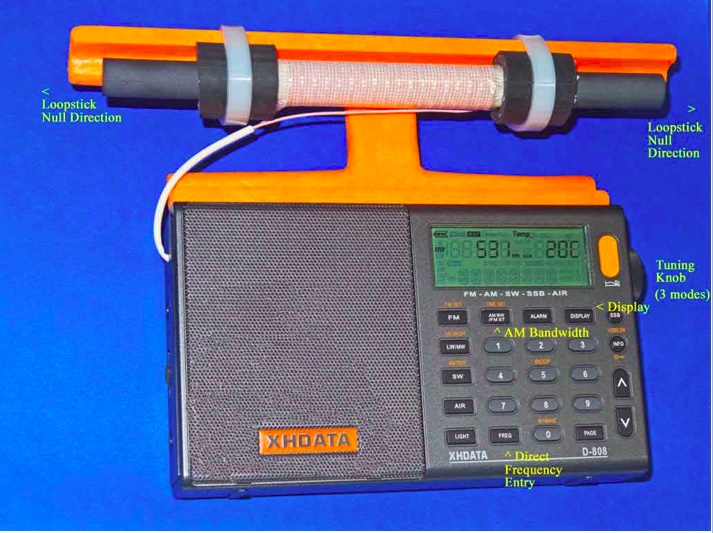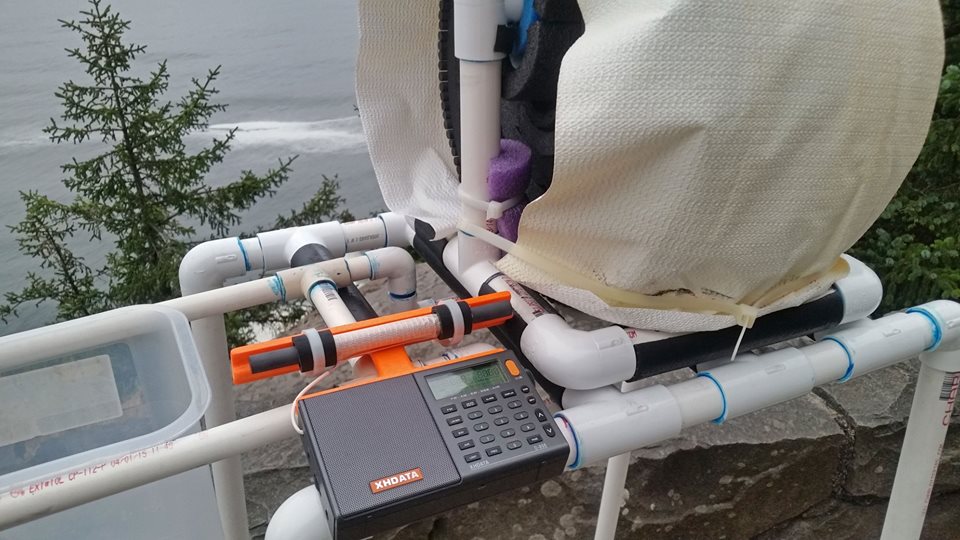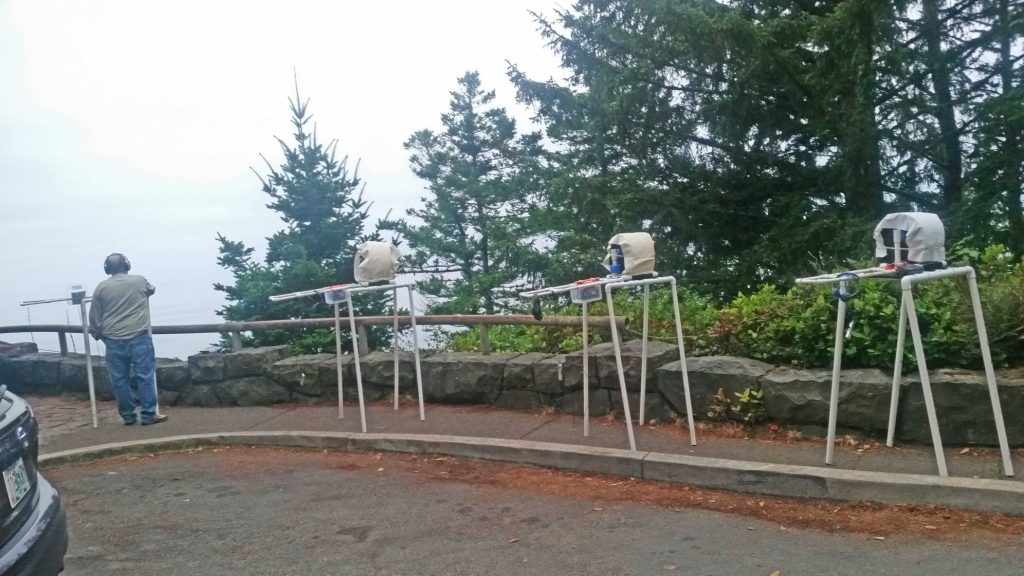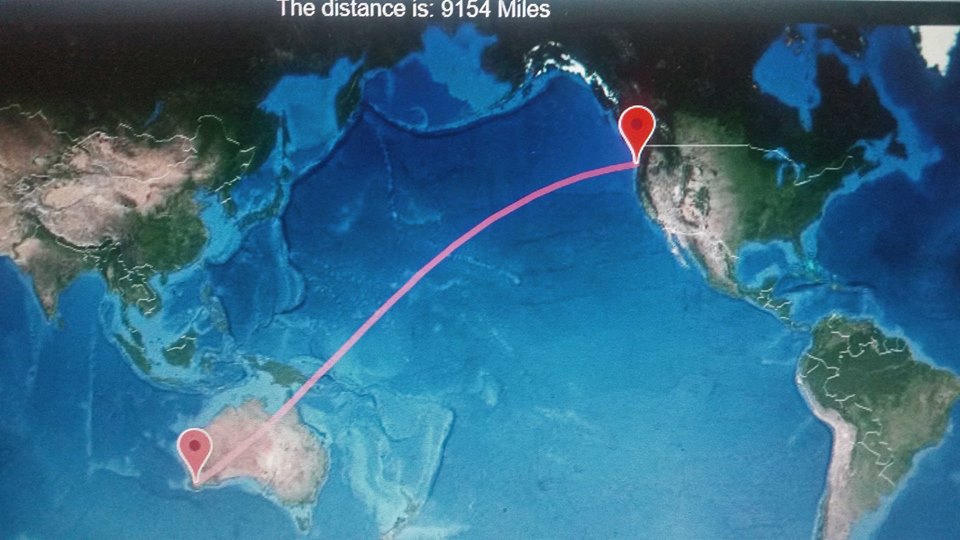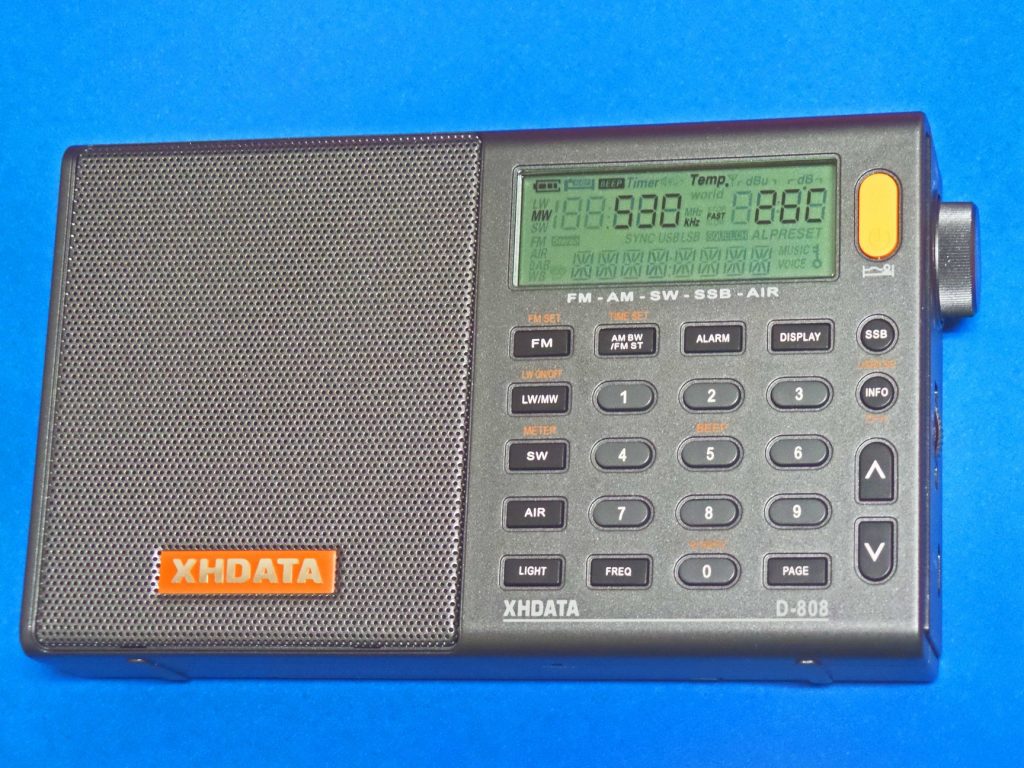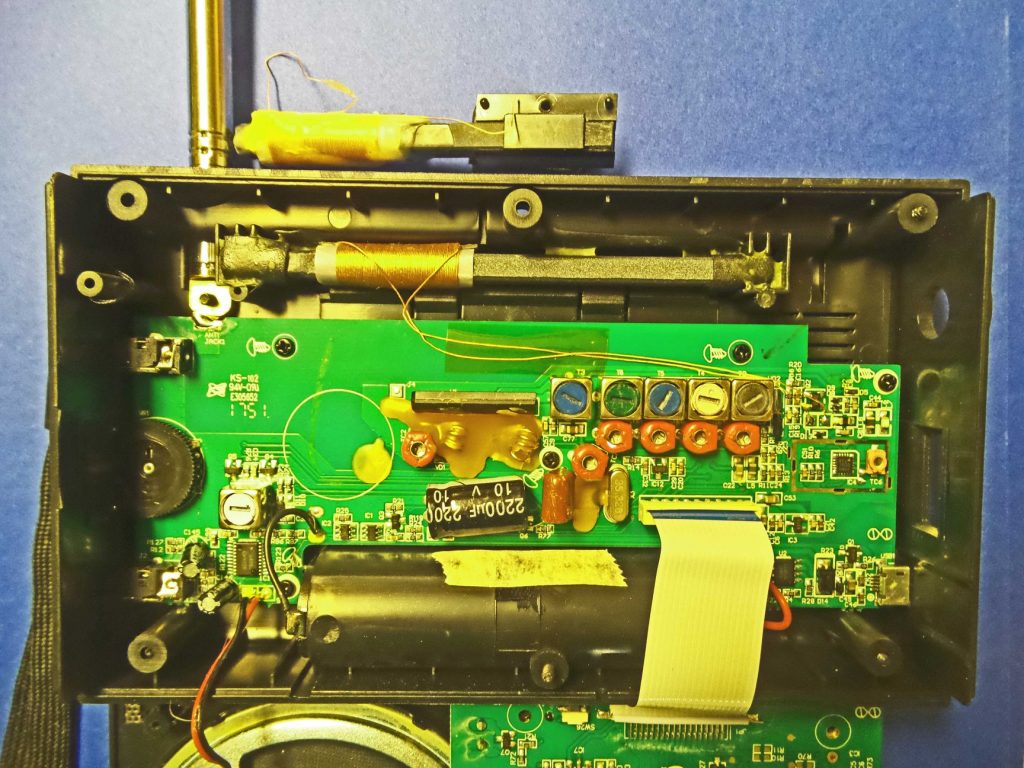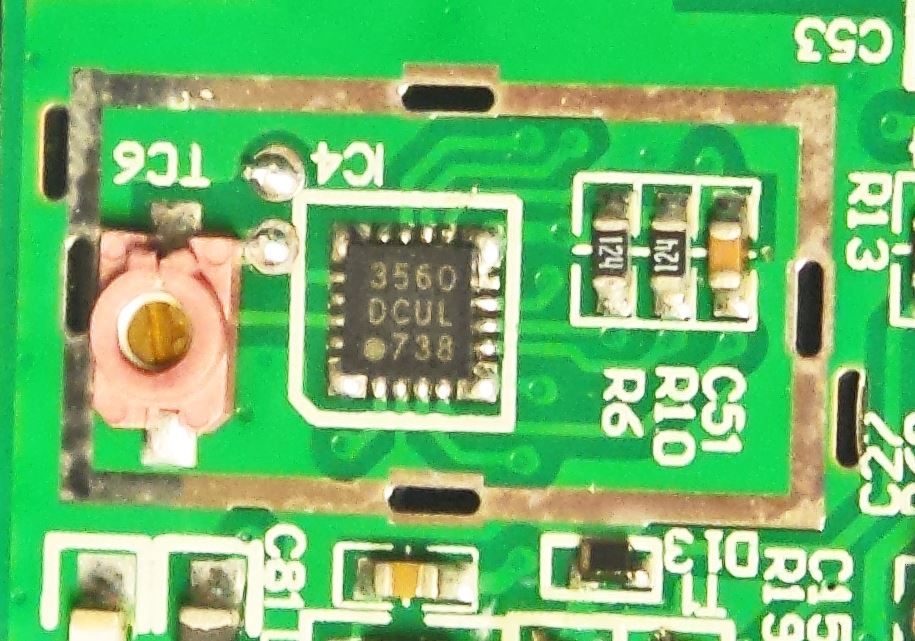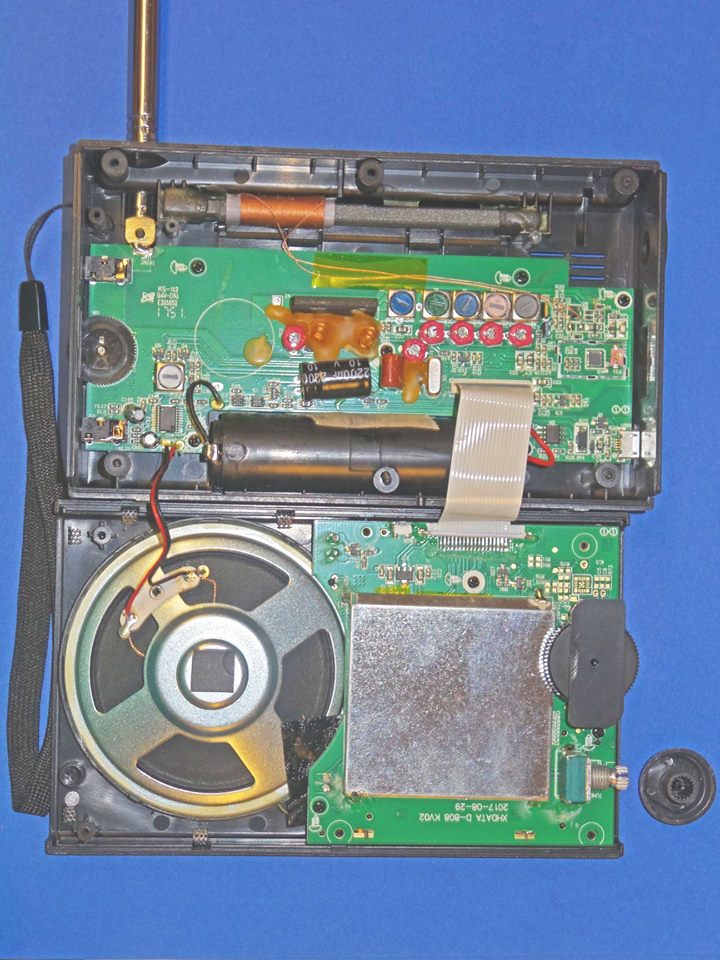Many thanks to SWLing Post contributor, Gary DeBock, for sharing the following guest post:
November 2018 Poipu, Hawaii Ultralight DXpedition
A Thrilling Sample of Forward Pacific Propagation
By Gary DeBock, Puyallup, WA, USA January 2019
In late September my wife and I stumbled across an outstanding 6-day Costco Travel package to the Aston at Poipu Kai on Hawaii’s Kauai island, the westernmost of the main Hawaiian islands (and closest to Asia). Included in the $2.3K cost was roundtrip airfare for two on Alaska Air (nonstop from Seattle both ways, with no “red-eye” flights), 5 nights at a gorgeous, beachside 2-BR condo with a patio area ideal for TP-DXing (and within easy walking distance to the island’s best snorkeling beach), a full sized new rental car and a $50 Costco cash card to use for a little spending $$. This was far and away the best travel bargain we have ever had to the Hawaiian Islands– and right in the middle of the DX season!
The location at Poipu Kai was at the extreme southeastern tip of Kauai Island, which offered a clear, unobstructed salt water path to Asia, ANZ, the Pacific islands and both North and South America. Unfortunately, it also offered a clear salt water path to the RF Zoo of Honolulu (more about that later).
Of course, before you can chase DX in Hawaii you will need to bring along some kind of radio and antenna– whether it is a hot-performing portable, an SDR along with a small broadband antenna or an Ultralight with a “Frequent Flyer” miniature FSL. Whatever you bring will need to go through TSA inspections both ways– so try not to get too complicated or extravagant. Fragile items can be taken in hand-carry luggage, so use this for radios, FSL antennas, digital recorders and anything else that could be smashed. Also keep in mind that many large motels and condos do not allow external antennas to be set up on their property– and most of them generate enough indoor RFI to make DXing indoors a lost cause. Before leaving for the Islands, be ready with a DXing plan that you know will work!
For me, TP-DXing with a modified CC Skywave SSB portable and TSA-friendly 5 inch (127mm) diameter FSL antenna in the large open patio area right outside our condo meant chasing enhanced DX right in the middle of a gorgeous beach side garden (click here to view on YouTube).
These 2-BR condo complexes were overbuilt somewhat, and the mainland owners of these condos badly need the tourist rental income to pay their mortgages. The competition for this rental income is high. As such, the cost per night for a stay at one of these newer 2-BR condos on Kauai is about the same as for a well-worn 1-BR motel room in Kona (on the Big Island).
So, what can a TP-DXer expect from the transoceanic propagation at Poipu Kai? First of all, there is so much enhanced DX coming from so many different areas of the world that you will need to carefully choose your priorities. What is your main DXing thrill? For me, it was chasing exotic Asian DX that was unlikely or unavailable at home in the Pacific Northwest. Unfortunately, when I tried to do this during the evening hours on Kauai (0700-1000 UTC) there was so much enhanced transoceanic DX coming from North and South America that the frequencies became a snarling maze of languages and heterodynes. During a check of 801 for kHz Pyongyang BS at 0922 UTC the frequency was completely hijacked by 800-Radio Transmundial in the Caribbean (near South America). The same thing was going on all over the band, with North and South American stations on the 10 kHz band plan fighting it out with Asians and Pacific Islanders using the 9 kHz frequency system. Honolulu QRM added its own distinctive touch to this jumbled fiasco, and eventually I was forced to concentrate on sunrise DXing sessions in order to track down any really exotic Asian DX. The bands were so much quieter during the sunrise sessions starting around 1500 UTC. Of course, if a DXer was mainly interested in North or South American DX in Kauai he could have made out like a bandit around local sunset, when the Asian and Pacific Island stations would not yet have faded in.
The Asian propagation to Kauai Island during the sunrise sessions was like having constant exposure to the best possible TP-DXing signals that ever show up on west coast ocean beaches– except that far more of Asia was in play. Big gun Middle East stations like 702-BBC (in Oman) can show up at decent strength, and not too many TP-DXers have familiarity with Arabic. Stations like 918-Cambodia which are rare DX on the west coast often thunder in at S9, and by necessity a DXer quickly learns the Vietnam parallel frequencies for its various networks. The Chinese propaganda blasters on 666, 783 and 909 pound in like locals, and a DXer needs to wait out their sign off times in order to receive anything exotic on their frequencies. The entire situation is a crash course in surviving and thriving in the middle of nonstop exceptional propagation, which can easily overload your abilities to sort out languages, stations and programming. Depending on your TP-DXing experience, you will either find this situation thrilling or bewildering.
If you have extensive TP-DXing experience on west coast ocean beaches you will probably feel like you are on Cloud Nine, but without this experience you will probably wonder where to start. The usual Asian big guns on 594, 747, 774 and 972 are either buried in Honolulu splatter or have trouble holding down their frequencies. Language recognition of Chinese, Korean and Japanese becomes essential in sorting out unfamiliar stations, and at least basic recognition of Vietnamese, Thai and Taiwanese is helpful. In addition, knowledge of exotic station frequencies is necessary before a DXer can hope to track these exotic stations down. Many exotic station frequencies (like 576, 594, 657, 693 and others) are jumbled with Honolulu splatter, and you need to know which ones are not (702, 729, 918, 954 etc.).The amount of TP-DXing experience that you can bring to the island is directly related to the results that you can expect from DXing on the island. Fortunately, because of two previous Hawaii trips and an April visit to the Cook Islands, I was able to track down some thrilling TP-DX on Kauai– 693-Bangladesh, 702-BBC (Oman), 729-Myanmar, 918-Cambodia, 927-AIR, 954-AIR plus Vietnam stations on 675, 702, 711 and 729. An S9-level 800-Radio Transmundial in Bonaire (next to South America) jumped over to 801 during an evening session. As an example of the outstanding ocean-enhanced propagation, for the first time ever in any DXpedition I was able to receive 7 transoceanic DX stations on one frequency alone (702 kHz).
Hawaiian station splatter is a major issue in Kauai, but depending upon the location of these pests, their signals may taper off just before TP propagation collapses (around 1705 in November). On my last session I was able to finally track down the 1000 kW Asian big gun 693-Bangladesh through wicked 690-KHNR (Honolulu) spatter, probably because the pest was farther into daylight than my more westerly Kauai location. The Hawaii pests on Maui and the Big Island also display the same behavior.
Propagation slowdowns on the west coast seem to be fairly irrelevant in Hawaii, with the only difference being S9 Australian and NZ signals showing up in the null of the S9 Asians. During regular sessions the big gun ANZ stations are usually around at S5 levels in the null of the Asians, but I didn’t really go after the DU’s during the Kauai trip. The Pacific island exotic stations on 621, 1017, 1098 and 1440 were usually at S9 levels about 2 hours after local sunset, but once again the North and South American transoceanic DX stations were turning their frequencies into a pretty wild fiasco. Originally it seemed like a great idea to have a straight salt water shot to all these areas, but be careful what you wish for– you just might get it 🙂
Finally, In consideration of the exceptional value of the Costco travel package and the superb transoceanic DX propagation prevalent on the Kauai beach, this 6 day Hawaii vacation proved to be as much of a lifetime hobby thrill as visiting the exotic Cook islands in April– at less than half the cost. My strong advice to anyone who is feeling bored with his AM-DXing hobby is to step out of your comfort zone, and try something really new. You can certainly chase DX at home or at the same flat ocean beach for decades, but you are unlikely to experience anything radically different from what you have already experienced. Breakthrough results require breakthrough innovation, exploration and experimentation, and the commitment to overcome all challenges until you get the results you desire.
DXing on Kauai Island makes it easy for you. All the comforts of home are within a 20-minute drive. A Walmart, Safeway, Costco and Home Depot are all in the local area, close to your gorgeous 2-BR beach side condo. You don’t even need to change currency or bring a passport (well, at least if you live south of the border). An outstanding snorkeling beach is a 5 minute walk away, and the “Garden Island” is one of the most beautiful in the entire Hawaiian chain, waiting for you to explore it in your new, full-sized rental car. What more could you ask for? So go ahead and take the plunge… and discover the exceptional thrill of forward Pacific TP-DXing!
Listed below are 94 transoceanic DX receptions made in Kauai with the related recording links, including stations in Oman, Egypt, Iran, India, Bangladesh, Myanmar, Cambodia, Thailand, Vietnam and many others. Sincere thanks is given to all who helped identify mystery stations, especially the Finnish DXers like Mauno, Mika, Jari L. and Jari S. with their awesome language identification skills. You guys really rock!
531 JOQG Morioka, Japan, 10 kW Male-female Japanese conversation at good level // 729 at 1542 on 11-8; weak co-channel underneath https://dreamcrafts.box.com/s/n4jmmtcrfz27ndi3pj479uzt6dx5zzyi
531 UnID-Chinese Female speech in apparent Mandarin mixing with NHK1’s male speech at 1543 on 11-8, but no indication whether this was the Mainland or Taiwan https://dreamcrafts.box.com/s/mh8iq0j49wx9hxbg0xrp8bhk0ugkopl8
540 CNR1 Synchros China Chinese speech with serious echo effect (poorly coordinated network) at very good level at 1510 on 11-4 https://dreamcrafts.box.com/s/gb5j3a6jlbt2natz372q4jnoer69hft9
540 UnID-Spanish During a search for Samoa at 0738 on 11-6 this strong mystery Spanish station monopolized the frequency; both North and South America had a clear salt water path to my DXing site, making it tough to chase the Pacific islands after sunset https://dreamcrafts.box.com/s/vm0datfx40j4ie2mxyioby62in9v81wl
549 UnID-TP This was a rough frequency because of 550-Maui, but there is a 1200 kW CNR5 station on the frequency, and some female speech with apparent Chinese intonation was getting through Maui’s male speech at 1515 on 11-4 https://dreamcrafts.box.com/s/jrbdmp4mb3cd9935dze9v5l2st4ig5ed
603 2RN Nowra, Australia, 10 kW Male-female DU English conversation not // 612 at 1541 on 11-7 over UnID music station during auroral conditions https://dreamcrafts.box.com/s/6vwkk6f197qg33q2hgmqnoocz2jstviu
603 CRI Dongfang, China, 300 kW Vietnamese service with Chinese lessons very strong at 1456 on 11-6 https://dreamcrafts.box.com/s/sv0u58fu062eblcno5xdnztwdaralsoe
Chinese ID and TOH fanfare at good level at 1500 on 11-6 https://dreamcrafts.box.com/s/kj9891ur1fkzfks3yycf78uqbdmn51xb
603 HLSA Namyang, S. Korea, 500 kW Presumed the station with Korean intonation under strong Chinese music from CRI during its Vietnamese service at 1512 on 11-3 https://dreamcrafts.box.com/s/0uruseu0ejdxa587llns1gkgd34gr0ey
603 UnID Music station mixing with 2RN during auroral conditions at 1541 on 11-7; most likely NZ’s Radio Waatea https://dreamcrafts.box.com/s/6vwkk6f197qg33q2hgmqnoocz2jstviu
612 4QR Brisbane, Australia, 50 kW Overwhelming signal with call-in quiz program during auroral conditions at 1536 on 11-7; this was the strongest Oz signal during the trip https://dreamcrafts.box.com/s/xlx5s7acnqxilehj4yfdartp6yda1b4l
612 JOLK Fukuoka, Japan, 100 kW Good signal with Japanese male conversation // 729 at 1516 on 11-4 https://dreamcrafts.box.com/s/491nyli0zpiyoomht2mydrbl6zd66ysr
621 China (Heilongjiang?) Chinese music at good level but suffering from the throbbing Pyongyang BS transmitter on the same frequency at 1503 on 11-4 https://dreamcrafts.box.com/s/d95t13b9vhd8ib01p09gtd68j2ag7j2u
5+1 pips mixing with the awful-sounding 3+1 pips from Pyongyang BS at 1500 on 11-4 (at 39 seconds into the recording) https://dreamcrafts.box.com/s/612kbk25hqqlxh1r4qfzaxzeuuwktbeo
621 Pyongyang BS/ VOK Chongjin, N. Korea, 500 kW The sickest sounding transmitter on the band, with a throbbing off-frequency drift. This was the wacky audio during the VoK Japanese program at 0943 on 11-3 https://dreamcrafts.box.com/s/7d6eggmr9ntnfjej3zf22dh1s5p32wyd
621 Radio Tuvalu Funafuti, Tuvalu, 5 kW The usual S9+ signal with female speech in the island dialect at 0928 on 11-3, with drums pounding for emphasis https://dreamcrafts.box.com/s/5089jtrmpi5eajk330uwukvz4brqfoyk
Clear signal and 1 kHz heterodyne from Tuvalu (for the first 7 seconds) degenerates into a throbbing heterodyne and degraded signal when the FSL is re-directed at North Korea at 0942 on 11-3 https://dreamcrafts.box.com/s/po98lqzzfn1s1vmu6ul6r0tplex85mld
630 4QN Townsville, Australia, 50 kW Call-in talk program // 612 over DU English co-channel during auroral conditions at 1542 on 11-7 https://dreamcrafts.box.com/s/03ubp9so6jtjnywhbt3v2sehs69fzsay
630 CNR2 Synchros China Female Chinese speech fairly strong (but with slight muffled effect) over Asian co-channel at 1526 on 11-4 https://dreamcrafts.box.com/s/to3qzxbb5oofj447q9f4z47y4s1crqap
630 VoV? Animated male-female speech in apparent Southeast Asian dialect dominant over CNR synchros at 1523 on 11-4; Jari S. guesses this is Vietnamese, but there was no chance at the time to check the 675-711 parallels https://dreamcrafts.box.com/s/k0ttlujgsp2p11817uhakkgrqwrzdlvj
630 UnID-DU DU English co-channel mixing with 4QN during auroral conditions at 1542 on 11-7; experience in the Cook Islands indicates this is most likely RNZ in Hawkes Bay (but no parallels available at the time) https://dreamcrafts.box.com/s/03ubp9so6jtjnywhbt3v2sehs69fzsay
639 2HC Coff’s Harbour, Australia, 5 kW Australian marine weather forecast at 1504 on 11-5; despite lack of any place names, Tony Magon says that ABC stations don’t run such detailed marine weather forecasts https://dreamcrafts.box.com/s/bjwhwkeh3ss3d0tmm6sl977pm7mftrd9
639 CNR1 Synchros China Male Chinese speech and music strong at 1617 on 11-7 https://dreamcrafts.box.com/s/fj8tbboshrlvpx0l9m1qcovr69zqhn1j
639 JOIP Oita, Japan, 5 kW Japanese female speech mixing with CNR1 at 1457 on 11-8; the Japanese DXers say that this is the NHK1 format https://dreamcrafts.box.com/s/9pkoxpg045t2y0mmuz5c2b74p2oq15wy
640 KFI Los Angeles, CA, 50 kW The North American stations were not targeted during this trip, but this particular one monopolized the 639 split frequency every evening, such as at 0924 on 11-3 https://dreamcrafts.box.com/s/f2mfmvymwykmbkaylmbhewvjkb25nc0k
657 China (Henan?) All alone with good signal (through 650 splatter) with Chinese male speech at 1609 on 11-4 https://dreamcrafts.box.com/s/pv00eqjyg64vxwltg7cjvsa0bwzaacs8
657 Pyongyang BS Kangnam, N. Korea, 1,500 kW The strongest N. Korean signal on the band (and one of few with a clean signal) was at overwhelming strength with music at 1533 on 11-3, with minor 650 splatter https://dreamcrafts.box.com/s/lbpugjif1lnf5cwn5vghmmb3qwhrofpy
657 Star Wellington/ Tauranga, NZ, 50/ 10 kW Presumed the one with Christian music at a strong level (through some 650 splatter) during auroral conditions at 1509 on 11-5 https://dreamcrafts.box.com/s/trhq06ghg71chu030263xjngun2vokf0
666 JOBK Osaka, Japan, 100 kW Japanese male speech // 729 at temporary good level at 1535 on 11-5 https://dreamcrafts.box.com/s/sybm328qsshfn4xvscmxxl0k1en2edy8
666 Voice of the Strait Fuzhou, China, 600 kW A major propaganda blaster to Taiwan, this station (along with 783) almost always had potent signals during sunrise sessions. This female pop music was at typical strength at 1550 on 11-7 https://dreamcrafts.box.com/s/3df1thw74spjesqmvuvt3mjq0dlg4jhj
675 Cheng Sheng BC Peikang, Taiwan, 5 kW Male-female call in talk program in Chinese dialect at 1655 on 11-7; Hiroyuki Okamura says this is Taiwanese https://dreamcrafts.box.com/s/aqd2vjmbcvofpsygksaqx4cqhc0nfbjf
Taiwanese pop music and male speech at good level at 1658 on 11-7 https://dreamcrafts.box.com/s/n98qe46dyd1vclchaz2b36s6mxc3la0w
675 NHK1 Synchros Hakodate/ Yamaguchi, Japan, 5/ 5 kW Male Japanese conversation at modest strength // 729 at 1557 on 11-8 https://dreamcrafts.box.com/s/2yeze49zxpo1jhyly1ap3xqqhc3l7oek
675 VoV My Hao, Vietnam, 500 kW Female speech at very good level // 711 at 1637 on 11-7 https://dreamcrafts.box.com/s/9sg4yp7lgfob6e5hw1wphlklnljbvwyq
693 Bangladesh Betar Dhaka, Bangladesh, 1000 kW The super power exotic station finally broke through wicked 690-KHNR Honolulu splatter (10 kW at 113 miles) at 1639 on 11-8 with an apparent Islamic sermon (having mentions of “Allah” at 27 and 31 seconds) https://dreamcrafts.box.com/s/haye98bfrypbt1cdb1wgma2mx01wskpx
693 JOAB Tokyo, Japan, 500 kW NHK2 Music box sign off chimes getting through rough 690-Honolulu splatter quite well at 1533 on 11-4 https://dreamcrafts.box.com/s/7938apvd3x8lb0tt99ytvr09kvksug8k
702 2BL Sydney, Australia, 50 kW Male DU English speech at good level // 612 at 1454 on 11-5 https://dreamcrafts.box.com/s/ld9wlkvmd3wkdx82ga2udkcauxivtakq
702 BBC Arabic Service A’Seela, Oman, 800 kW One of the big surprises of the DXpedition, this station was amazingly strong for the 8,586 mile (13,818 km) distance at 1604 on 11-6. Thanks to Mauno and Mika for the language and station investigation https://dreamcrafts.box.com/s/cwgqhpm3hy0thmthw4o018i7c70y0b8i
702 China Jiangsu, China, 200 kW Beijing time and fair-level ID after KCBS time pips at 1500 on 11-8; thanks to Chuck and Jari S. for ID assessment https://dreamcrafts.box.com/s/6alut7afzdg06a5ll06p54hnuc7s1j8w
702 KCBS Chongjin, N. Korea, 50 kW Another North Korean with transmitter issues, this station was somewhat off frequency, with degraded audio (although not as bad as 621). Its Korean ID and 3+1 pips were dominant over China at 1500 on 11-8 https://dreamcrafts.box.com/s/6alut7afzdg06a5ll06p54hnuc7s1j8w
702 NHK2 Synchros Kitami/ Hiroshima, Japan, 10/ 10 kW Japanese female speech at equal level with Korean speech from KCBS (along with its throbbing hum) at 1457 on 11-8 https://dreamcrafts.box.com/s/9cds03s0hq94kzo87stua4qi6orymree
702 VoV Danang, Vietnam, 50 kW Male and female speech at 1612 on 11-4 with announcers and format sounding very much like those on 675 and 711 (although not parallel); Jari L. says this is Vietnamese https://dreamcrafts.box.com/s/idw17ybpwsblr8evf440xnlr13z4l5c9
702 UnID-DU Music station looping toward South Pacific mixing with 2BL during auroral conditions at 1452 on 11-5; most likely NZ’s Magic https://dreamcrafts.box.com/s/3al6uof4yobmjopsyo98nohvw1k8wuer
711 HLKA Sorae, S. Korea, 500 kW One of the strongest Koreans on the band, but it had co-channel issues with V.O. Kuanghua and VoV. This very strong male-female Korean speech was at 1537 on 11-3 https://dreamcrafts.box.com/s/m4ybyndsuy6ivg6jvyp1xm79ra76cqgs
711 V.O. Kuanghua Hsinfeng, Taiwan, 250 kW Trumpet and Kuanghua ID mixing with the 3+1 pips from HLKA at 1500 on 11-7 https://dreamcrafts.box.com/s/pvg2fdt6hq122dki4vgrtdk5imwyg21a
Chinese conversation at a good level at 1503 on 11-6 (Thanks to Tony Magon for assessment) https://dreamcrafts.box.com/s/1xegn3xe67cm2p167bihjfdum9lf11pm
711 VoV Thoi Long, Vietnam, 500 kW Female speech at good level // 675 at 1529 on 11-6; this station often had co-channel issues with Korea and Taiwan https://dreamcrafts.box.com/s/j2vsyc02skttocssv3dxpxc6hknivx0s
720 China The “Chinese opera station” was dominant on the frequency on most mornings, such as at 1553 on 11-5 with this strong signal, but its location in China is unknown https://dreamcrafts.box.com/s/tr03jtqk4qhxscdjn8erazo4944v9tlc
720 UnID-TP Mystery Asian station (apparently not in any east Asian language) mixing with the Chinese opera station at 1536 on 11-4; Mauno and Jari S. mentioned VOIRI (Iran) as a possibility, but the Tajik and Uzbek languages being broadcast around that time are tough to identify https://dreamcrafts.box.com/s/8l5utr5yxvybjzb2wrmaxvkoazuqmdf9
729 China Chinese male speech mixing with JOCK’s female Japanese speech at a good level at 1456 on 11-8 https://dreamcrafts.box.com/s/4mbe26337s5j0cdsopwzxolv280je7z0
729 JOCK Nagoya, Japan, 50 kW Oddly enough, this was the strongest NHK1 frequency. Female Japanese speech was at a good level mixing with China at 1456 on 11-8 https://dreamcrafts.box.com/s/4mbe26337s5j0cdsopwzxolv280je7z0
729 Myanma Radio Yangon, Myanmar, 100 kW Male-female speech in unique Asian language with clear mention of “Myanmar” at the 46 second point at 1541 on 11-4 (thanks to Chuck for deciphering). Unfortunately 576 and 594 were wiped out by Hawaii splatter https://dreamcrafts.box.com/s/yq7uqray3bq93a6zu76kb92enk46wvq6
729 Myanma Radio? Fading up all alone at 1625 on 11-4, this male speaker’s language and voice sound a lot like the ones in the previous recording (thanks to Bruce for language suggestion, and to Ken Alexander, a Canadian retiring in Thailand, for the improved audio file) https://dreamcrafts.box.com/s/24c46lrjjm2329x4e1h634u3m7swn3f5
729 VoV Dong Hoi, Vietnam, 200 kW Male speaker in Viet-sounding language at 1615 on 11-4 with apparent mentions of “Vietnam” at the 1 second and 32 second points; Jari L. says it sounds like Vietnamese https://dreamcrafts.box.com/s/9va1h709ki2cqyaz0z7eg380w2k8xmcr
738 BEL2 Penghu, Taiwan, 100 kW This frequency had serious splatter from 740-Maui, but there was enough of the Chinese news format at 1517 on 11-3 spoken by the female announcer to make reasonably certain of the identity https://dreamcrafts.box.com/s/55slnp79bhb7sqjpubmnnab9j4g14804
747 JOIB Sapporo, Japan, 500 kW The NHK2 big gun was barely able to get by 740-Maui splatter at 0933 on 11-3, but that was better than 594-JOAK, which was totally wiped out by 590-Honolulu https://dreamcrafts.box.com/s/zqkpa4892mi9ccdzz7qojocq8bm9lmmq
774 3LO Melbourne, Australia, 50 kW LR Network big gun at typical powerful strength with call-in talk at 1558 on 11-7 https://dreamcrafts.box.com/s/8094b97u3qmi3nzwb15z6bcl500zwmww
783 Voice of the Strait Zhangpu, China, 600 kW A major propaganda blaster to Taiwan, this was the strongest Asian station during the trip. All kinds of carefully selected music were broadcast– pop, opera and even rap (which, as Chris Kadlec says, is banned in China but is fair game to broadcast to Taiwan, where it is popular). This big gun was totally immune to any propagation downturns, as demonstrated in this local-like sign off message at 1600 on 11-7, which was actually a DU-slanted morning https://dreamcrafts.box.com/s/6cbton9gqiqvqiwe6ewfc8u0aoztv4dm
Female vocal music at an excellent level at 1551 on 11-4 (typical strength) https://dreamcrafts.box.com/s/rkfzjnew44pm1n35j815sf3zlu9x1ejq
More S9 female vocal music and 5+1 pips prior to the 1600 sign off message on 11-5 https://dreamcrafts.box.com/s/4qryk7xdtvhih5bche2iixoswcso2sl1
“Banned” Chinese rap music by Allen Su at 1502 on 11-3; a link to the YouTube video of the same song (“Beijing City”) follows (thanks to Chris Kadlec for the link) https://dreamcrafts.box.com/s/ucf9y8awzw0e3ip5ppke4abwzt22t9ts
Click here to view on YouTube.
783 UnID-China Weak male Chinese speech continuing on the frequency after the Voice of Strait sign off at 1600 on 11-5 (from 1:10 to 1:20 in the following recording) https://dreamcrafts.box.com/s/4qryk7xdtvhih5bche2iixoswcso2sl1
792 4RN Brisbane, Australia, 25 kW S9 level female conversation during RN network program at 1618 on 11-6 https://dreamcrafts.box.com/s/2oe10pcuin6qvrrxtsyw5gpzy4wgjrk4
800 PJB Bonaire, Netherlands Antilles, 440 kW Hijacking the 801 frequency at 0921 on 11-3 with an S9 signal and “Transmundial” ID at 6 seconds, this signal was typical of powerful North and South American stations that would mix with the Asian and Pacific island stations each evening in a wild competition. Received at 5.981 miles/ 9,627 km https://dreamcrafts.box.com/s/wiotqzpyghyinwl4o1f0c3vw2s1brtbw
810 RNZ Dunedin, NZ, 10 kW Frigid weather report at 1604 on 11-5 during DU slanted conditions https://dreamcrafts.box.com/s/b171bq8mute3scndqna3ej0re65vb4r6
810 UnID-TP Weak Asian showing up at 1553 on 11-4, but not enough signal for language recognition https://dreamcrafts.box.com/s/3luto1kh3qamg706b9ax9uqn9vawer6h
819 KCBS Pyongyang, N. Korea, 500 kW This Asian big gun wasn’t quite as strong as it was in Kona, Hawaii a year earlier, and suffered some minor 830-Honolulu splatter. There was no sign of the Seoul area jammer, though. Its orchestral music was at good strength at 1606 on 11-3 https://dreamcrafts.box.com/s/zmtr8yqln8lqg9419a842u802w86pryx
837 CNR5 Quanzhou, China, 1000 kW Presumed the one with male speech in a Chinese dialect fighting it out with 830-Honolulu splatter at 1526 on 11-3 https://dreamcrafts.box.com/s/828hx6cpc0dhtsxwau7bz3uyd0x4o7um
855 Pyongyang BS Sangwon, N. Korea, 500 kW The usual female choral group shows up at a modest level at 1511 on 11-3. Like on 819, there was no sign of the Seoul-area jammer that showed up in Kona a year ago https://dreamcrafts.box.com/s/f4p1wfgy1qank63q9wdh8hjnyiyajrzm
864 HLKR Gangneung, S. Korea, 100 kW The Korean big gun is in a wild S9 snarl with a mystery Filipino station at 1539 on 11-3; this was a typical snarling Asian mix very common in the salt-water-boosted Kauai propagation https://dreamcrafts.box.com/s/edbmedfei6kjn85jvs9k21lwe8d89cxn
864 UnID-Philippines Apparent Tagalog male speech mixing with HLKR at a strong level at 1539 on 11-3, but no indication which one of the five stations it was https://dreamcrafts.box.com/s/edbmedfei6kjn85jvs9k21lwe8d89cxn
909 CNR6 Quanzhou, China, 300 kW Another of the Taiwan-directed propaganda blasters, this one tended to play classical or choral music, and (like 783-Voice of the Strait) it was usually at overwhelming strength. This sign off message at 1602 on 11-7 has it all– S9+ strength, a “Shenzhou zhi Sheng” female-voiced ID at 35 seconds, and even a suggestive-voiced female from 49 to 58 seconds. Current sign off is at 1604 https://dreamcrafts.box.com/s/urhk66t4mqunezupi99r0red0pt4u7ub
Typical classical music (at typical S9 strength) at 1532 on 11-4 https://dreamcrafts.box.com/s/ctsmjss2s8ly6qnzwint5yidigne44ho
Another sample of CNR6 classical music at 1510 on 11-3 https://dreamcrafts.box.com/s/0saadxt9qphazr951dfdpk51hftpm95h
909 Xinjiang RGD Tacheng, China, 10 kW One of the surprise receptions of the trip. The Mongolian language was unusually strong, and dominant over CNR6’s classical music at 1548 on 11-3; thanks to Mauno and Jari S. for the language identification https://dreamcrafts.box.com/s/9z54ibieboealz78p0n4zygelv41ghcf
909 JOVX Abashiri, Japan, 5 kW Presumed the one with Japanese female speech at 1608 on 11-7 (after the CNR6 sign off), and about 20 minutes after the usual NHK2 sign off that week (the only other Japanese station on the freq.) https://dreamcrafts.box.com/s/mnd4zqnvx5d6u35ihj7997no2r4hbz4v
918 ERTU Bawiti, Egypt, 10 kW Some awesome investigative work by Mauno determined that this modest signal at 1628 on 11-6 was Egyptian Arabic– one of the biggest surprises of the trip (otherwise it would have remained an UnID). Thanks for the extra effort! (8,921 miles/ 14,357 km) https://dreamcrafts.box.com/s/hhdwsw42ok5pcevh41amx9i7ln3cxmag
918 RNK Phnom Penh, Kampuchea, 600 kW One of the biggest stars of the DXpedition, with S9-level Kampuchean pop music almost every morning around 1630, burying Shandong completely. Apparently there is some special propagation between Hawaii and Southeast Asia around this time in early November. This music was at 1637 on 11-3 https://dreamcrafts.box.com/s/6ohs2orw3o1w5oiqyfyfxcczsrvykazq
Booming pop music at 1653 on 11-8 https://dreamcrafts.box.com/s/yimn4viqpff60d85ek5cvt1yxe6d5orb
Burying Shandong at 1635 on 11-8 https://dreamcrafts.box.com/s/geenpiko5i7rkohvdxwhfnbkavb928fe
Full National Anthem at 1700 sign off on 11-8 https://dreamcrafts.box.com/s/wfcfv169exidtnlflx3g0ikag1xdg7ql
918 Shandong RGD Synchros Shandong, China This Chinese network was mostly cannon fodder for RNK during the trip, but it did manage a very brief moment at equal strength with RNK’s high-voiced female speaker at 1553 on 11-4 https://dreamcrafts.box.com/s/pq6pl57x1j9qepa8he4lj43x48vggr6j
918 UnID-Philippines Tagalog-sounding speech at 1602 on 11-3, but no further indication of the identity https://dreamcrafts.box.com/s/pjot56bu42rzfhju80c7v9yoo2e386xn
927 AIR-South Visakhapatnam, India, 100 kW India news in English by female announcer at 1531 on 11-8 (mixing with China); with mentions of “also approved Indian…” at 9 seconds and “for India to express” at 25 seconds. Thanks very much to C.K. Raman of India for matching the recording to the AIR archives https://dreamcrafts.box.com/s/ozrw09zrlayks7nt3dxt95zeaibqmwd7
927 China Male Chinese speech dominant over AIR’s female English speech at 1533 on 11-8, but no indication which one of the multiple Chinese stations is showing up https://dreamcrafts.box.com/s/3pvkcyypj3qzpo3b1hyxtcubghlkf6vh
927 UnID-Chinese Male and female Chinese speech at 1600 on 11-8 with multiple mentions of the Taoist deity Wong Tai Sin, which would seem highly unlikely in the officially atheist Mainland. Maybe BCC in Taiwan? https://dreamcrafts.box.com/s/uvogxslwmgkqympbb041efmn6wp96uig
954 AIR-North Najibabad, India, 200 kW Female-voiced English news // 927 dominant over UnID Philippine station at 1534 on 11-8, with mention of “India” at 28 seconds https://dreamcrafts.box.com/s/htco3tjnefuoakh8xaauiuhnwav22gzc
Female-voiced English news // 927 temporarily at equal strength with JOKR at 1533 on 11-8, but slowly fading under the Japanese male speaker https://dreamcrafts.box.com/s/mllosolyokn18qmpyozv4y6gt1f3sbaj
954 China Female Chinese dominant over JOKR at 1534 on 11-8, but no indication which of the Chinese stations is showing up https://dreamcrafts.box.com/s/35kia9v9t1w352nksqvx2pj5z2wxetx8
954 JOKR Tokyo, Japan, 100 kW Japanese male conversation temporarily dominant over a wild mix of AIR’s female English speech, UnID Philippine music and Chinese female speech at 1534 on 11-8 https://dreamcrafts.box.com/s/6otqthqxgkrgybxe4cn03j5rd5eo25mz
954 UnID-Philippines Persistently strong Tagalog-speaking lady dominant over co-channels at 1512 on 11-8, but there were no definite identity clues despite the signal strength (thanks to Vlad T. and Jari S. for the language identification) https://dreamcrafts.box.com/s/wsfgz5aysxey1dw1ecd3jnq0r3v96loz
The same female Tagalog speaker came back to dominate the frequency at 1552 on 11-8 in a conversation with someone, but with three Philippine stations on the frequency the identity remains a mystery https://dreamcrafts.box.com/s/gfwl7oisg9cdrsfxqp7t6vuqu1lc05gi
972 China Henan Economic Service? Persistent co-channel under HLCA during the week with Chinese speech format, such as at 1633 on 11-8. Rarely dominant https://dreamcrafts.box.com/s/guydly45vysak1dxbkkt178p07wfqpyy
972 HLCA Dangjin, S. Korea, 1500 kW The Korean big gun played the part during most sessions, although the Chinese co-channel rarely left it alone. Here was a typical S9 signal at 1532 on 11-3, over the Chinese and accented English news co-channels https://dreamcrafts.box.com/s/v3ojq208x2pmrajzgrv5uqjh1cxu2xa7
972 UnID– AIR (East)? Accented English news from 10 seconds to 25 seconds in the following recording under HLCA at 1532 on 11-3, but there was no chance at the time to check the other AIR frequencies for a parallel. Unless Henan Economic was broadcasting in English this was most likely the 300 kW Cuttack transmitter in eastern India, with no other accented English possibilities on the frequency at the time https://dreamcrafts.box.com/s/v3ojq208x2pmrajzgrv5uqjh1cxu2xa7
981 CNR1 China Synchros Not quite as strong as in Kona, with minor splatter from 990-Honolulu. A typically strong signal was at 1505 on 11-8 https://dreamcrafts.box.com/s/1z0bdvj98dmhq9p8mhmp37xg5q5bgkcw
1008 JONR Osaka, Japan, 50 kW Japanese female pop music at modest strength all alone at 1610 on 11-8 https://dreamcrafts.box.com/s/3k82pa3pb541uje83jq3kof0j3irhq43
1017 A3Z Nuku’alofa, Tonga, 10 kW Island music with reverb-enhanced male speaker at strong level at 1617 on 11-8; the recent transmitter rejuvenation made this South Pacific station a reliable powerhouse each morning https://dreamcrafts.box.com/s/m7cvf5e2sidwi845lh4jg8c684vz8y03
1044 CRI Changzhou, China, 300 kW Japanese service at excellent strength with female speech at 1523 on 11-6, but suffering from some 1040-Honolulu splatter https://dreamcrafts.box.com/s/a89delbal9dtjau5klrsetbww9wleeyh
1323 CRI Huadian, China, 600 kW Russian service at good strength all alone at 1520 on 11-6 https://dreamcrafts.box.com/s/jaj942zuj6efhoux4nu8retd2jzg3bge
1440 JOWF Sapporo, Japan, 50 kW Always in a mix with Radio Kiribati every evening, the pop-oriented station with its female announcer could occasionally reach a strong level like at 0935 on 11-3 https://dreamcrafts.box.com/s/3fyr4auint1mpjvxu4tz8tm02knd5x6g
1440 Radio Kiribati Bairiki, Tarawa, 10 kW The usual female announcer speaking the island language got a boost from semi-auroral conditions at 0845 on 11-6 to thunder over JOWF’s Japanese female announcer https://dreamcrafts.box.com/s/cpgfb9jg414gez35y94k0aaghhh6ffcy
Kiribati could pound in at great strength over JOWF during auroral conditions, such as with this Christian worship music in the island language at 0745 on 11-6 https://dreamcrafts.box.com/s/qbq68kkr78nri0xbghi7d9q24x43zwny
1557 UnID-TP Weak music from unknown source at 1622 on 11-8 https://dreamcrafts.box.com/s/ct5468xgnxmwgq3jqobks9fjcr3ak8f3
1566 HLAZ Jeju, S. Korea, 250 kW The Korean big gun with its Christian programming was seriously chopped up by 1570-Maui splatter, such as during its Chinese service at 1526 on 11-3. As such, the frequency was too noisy to chase exotic targets https://dreamcrafts.box.com/s/dpy8dlyerl0z55rdy3vuo0qv7avmu0hx
1575 Iranian Jammer Causing severe interference to VOA-Thailand’s Bengali program at 1620 on 11-8, the “official” target of this prolific Jammer is Radio Farda in the U.A.E. The transmitter location is unknown, but likely distance to Kauai is around 8,000 miles/ 12,875 km https://dreamcrafts.box.com/s/pn1iwgnxq3vzgf5tj9b2ek0pb6p14qg3
1575 VOA Ban Phachi, Thailand, 1000 kW The big gun generally got its programs through prior to 1600, but the Iranian Jammer wreaked havoc on the Bengali program by 1630. This Burmese program at 1507 on 11-7 had no problem, though https://dreamcrafts.box.com/s/zww2i6bb7yc344dh2a7qo50wq9twmhvu
1593 CNR1 Changzhou, China, 400 kW Male Chinese speech at modest level at 1455 on 11-7 https://dreamcrafts.box.com/s/imlagv2gf4u2p1uwp28diifz7xxwqclj
1593 NHK2 Synchros Matsue/ Niigata, Japan, 10 kW/ 10 kW Presumed the one with Japanese-intonated female speech under CNR1’s male Chinese speech at 1454 on 11-7 https://dreamcrafts.box.com/s/1pspxzrtvefmxo4j7r65aqpn212t26ya
Broadband SDR-DXing in Hawaii—A Scouting Report
As most transoceanic DXers are aware, the Hawaiian Islands offer an exceptional opportunity for AM-DXing hobbyists to chase enhanced, salt water-boosted signals from around the world. A recent Ultralight + FSL antenna trip provided all the DXing excitement anyone could hope for, with potent signals received from Asia, the Middle East, Oceania, and both North and South America. But this was all live DXing– one frequency at a time. Is a similar trip possible using a broadband loop antenna, and an SDR to record spectrum in one of the world’s most enhanced environments?
Normally such a challenge would be unthinkable, due to external antenna restrictions and the impossibility of carrying large loop antenna components on major airlines. But the unique situation at Poipu Beach on Kauai Island is definitely worth mentioning.
First of all, there is a fully stocked Home Depot store about 15 minutes away by car, offering PVC pipes, concrete bases and antenna wire– along with any tools necessary for antenna assembly. The 2-BR condos on the Poipu Kai beach are not part of a motel, but are individually owned and rented out by a management company for owners on the mainland. I never saw a single management company official on the property during the entire 6 days, except for the night when we checked into the complex management office (and he seemed to stay right there). Each morning I set up my FSL antenna on a 5′ PVC base in the large open patio area behind our condo from 0400-0700 local time (1400-1700 UTC), and never was questioned by anybody– let alone anybody from the management company. I’m pretty sure that small, breakdown versions of broadband antennas (such as the type that both Chuck and Tom have become skillful in setting up at the Rockwork cliff every August) would be fully acceptable during these sunrise enhancement sessions in Hawaii. There is excellent, free Wi-Fi available at the site for checking parallels and web streams, and fragile items like the SDR receivers and Wellbrook amps could be carried in hand carry luggage, similar to how I carry the Ultralights and FSL antennas. After such a broadband DXpedition the antenna parts could be probably be returned to the local Home Depot store, possibly with a chance of refunds.
Of course with a such a pioneering effort there will always be challenges and surprising discoveries, and a sense of optimism and adventure will prove to be most useful. But the opportunity certainly is there– as well as the chance to conduct a breakthrough DXpedition that could be of legendary success.
What an amazing report, Gary! I’ll admit, I’m just a wee bit envious of your Ultralight DXpedition locations! Thanks for sharing the details an, especially, your recordings! Inspiring!

